Author : Building Code Trainer
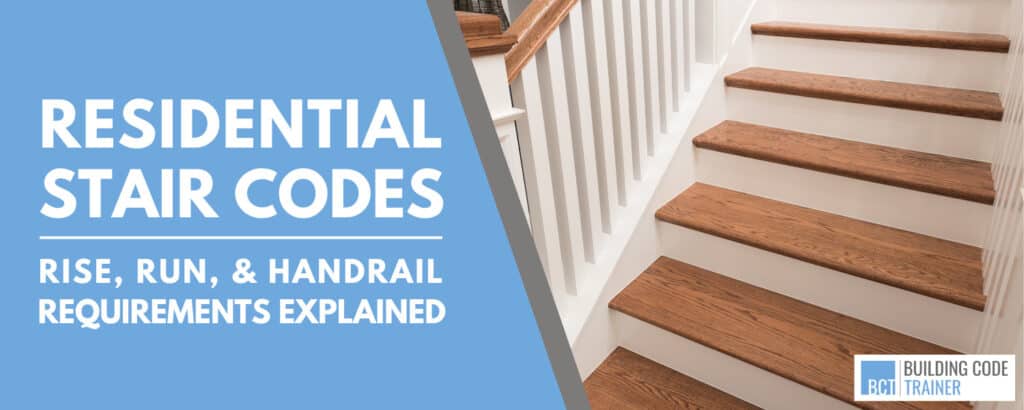
When it comes to residential stair standards, the 2021 International Residential Code (IRC) establishes minimum requirements for stairs to insure a level of safety to the public. Several components are looked at such as stair width, headroom, riser and tread heights.
The first important thing to note here is that if you are looking for commercial stair standards, they vary. In which case you will need to look to the International Building Code (IBC).
In this post however we will be looking at the code standards related to residential stairs in accordance with the International Residential Code (IRC).
Fun Tip: Looking for Commercial Stair Requirements? Be sure to check out this POST.
Now let’s get into what those residential stair requirements are…
MINIMUM STAIR WIDTH
Section R311.7.1 outlines the minimum width of a residential stairway.
What is the Minimum Width of a Stair?
The minimum width for stairways shall not be less than 36 inches clear.
Now when handrails are introduced they shall not project more than 4 ½ inches on either side per Section R311.7.8.2.
Therefore if a handrail is provided on one side, the clear width of the stairs shall not be less than 31 ½ inches and when handrails are provided on both sides, the clear width shall not be less than 27 inches.
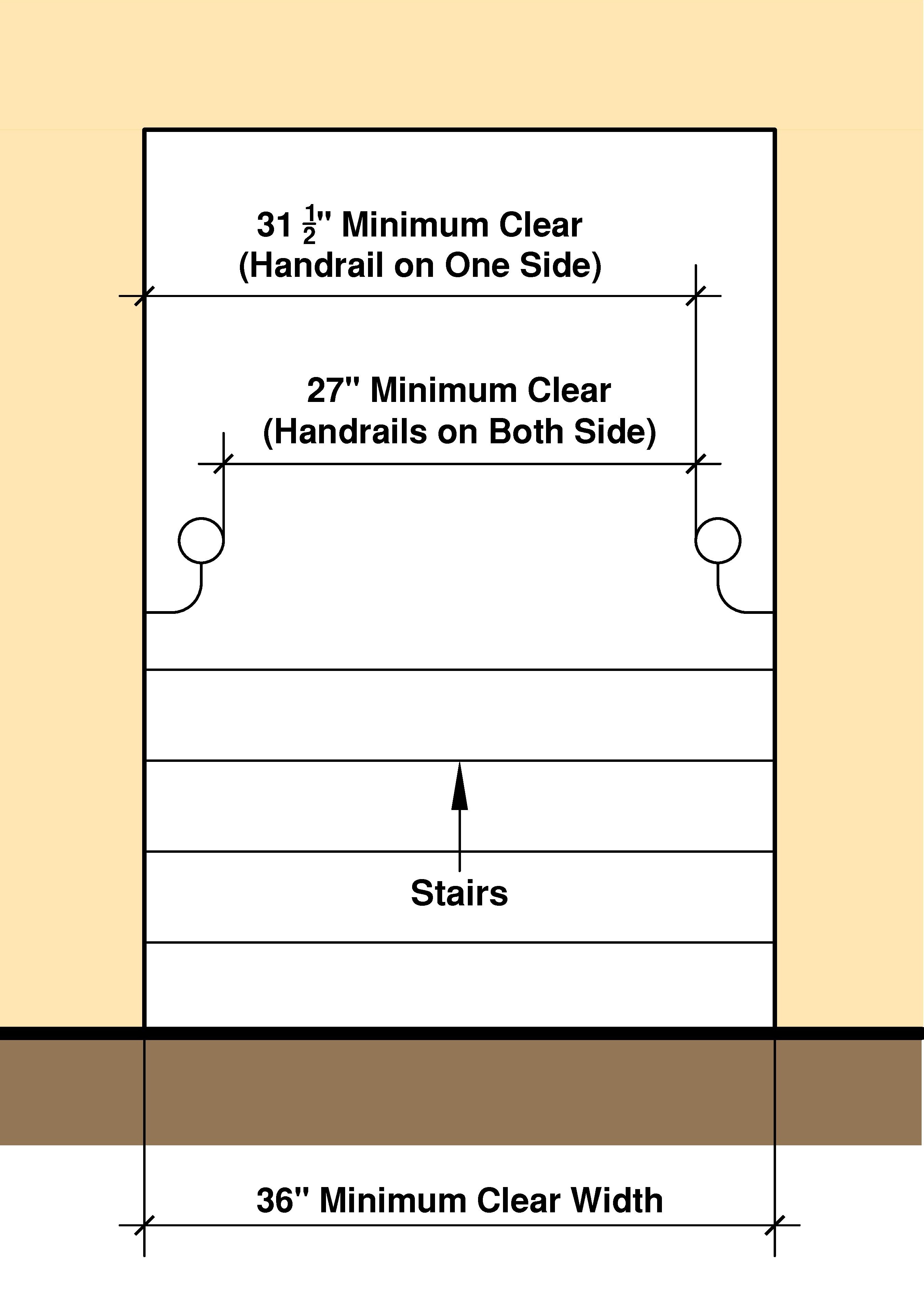
HEADROOM AND VERTICAL RISE OF STAIRS
Sections R311.7.2 and R311.7.3 outline the minimum headroom requirement and maximum rise for a flight of stairs.
What is the Minimum Headroom Clearance for Stairs?
Having proper headroom is another important code requirement. The headroom for stairways measured vertically from the sloped line adjoining the tread nosing or the floor surface of the landing should be no less than 6 feet 8 inches.
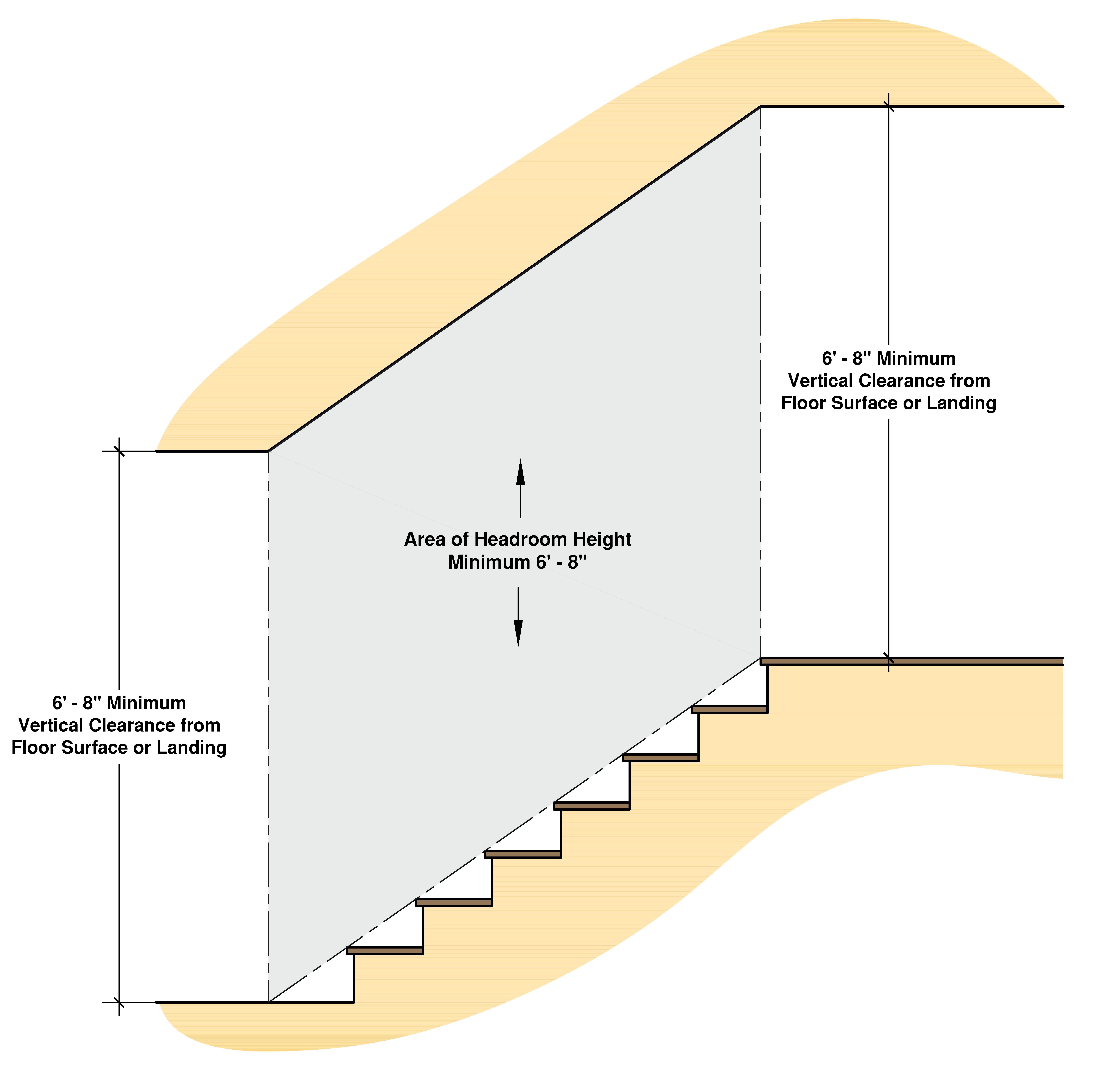
What is the Maximum Vertical Rise for Stairs?
Stairs cannot be continuous without have a landing or floor level that breaks up the flight of stairs. The height limit established by code is intended to provide a reasonable interval for the user so that they may rest on a level surface and to alleviate the negative effects of long uninterrupted flights.
The code establishes a maximum vertical height of 151 inches (12 feet 7 inches) between landings or floor levels for a flight of stairs. If the distance between floor levels are greater than 151 inches, the flight of stairs would require a level landing somewhere in-between to break up the flight of stairs.
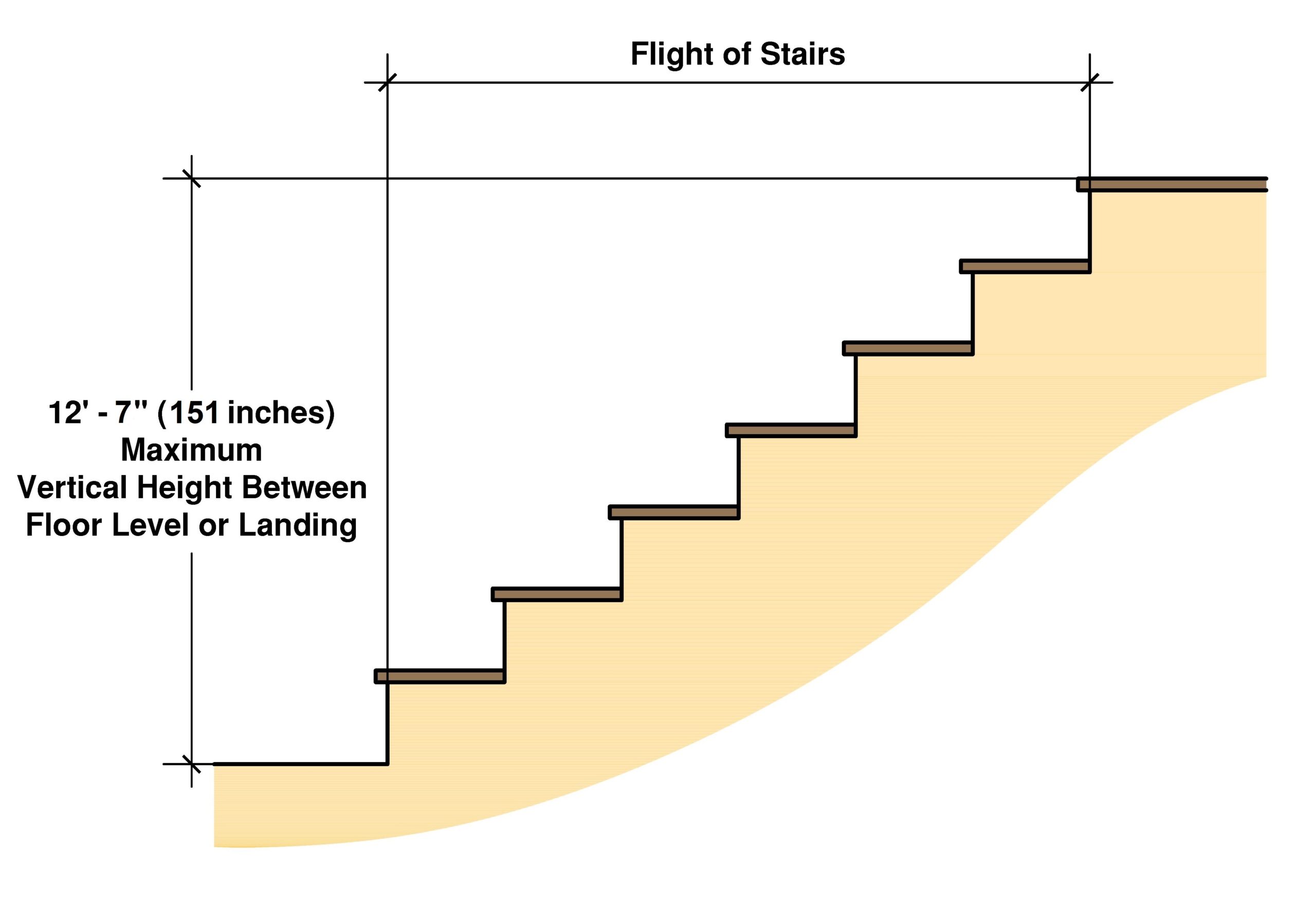
STAIR RISER HEIGHT AND STAIR TREAD DEPTH
Stair riser heights and stair tread depths should be within the parameters of the code to avoid any potential trip hazards for inconsistencies. A uniform flight of stairs provides a safety factor.
Inconsistencies or variations in risers or treads could interfere with the rhythm of the individual using the stairs. Therefore limitations in riser heights and minimum widths for treads is an important rule to follow.
Stair Riser Height
Section R311.7.5.1 of the code specifies that risers must not be more than 7 ¾ inches in height and that any variation of risers within a flight of stairs must not be more than ⅜ inch. Note that dimensions here should be taken excluding carpets, rugs, or runners.
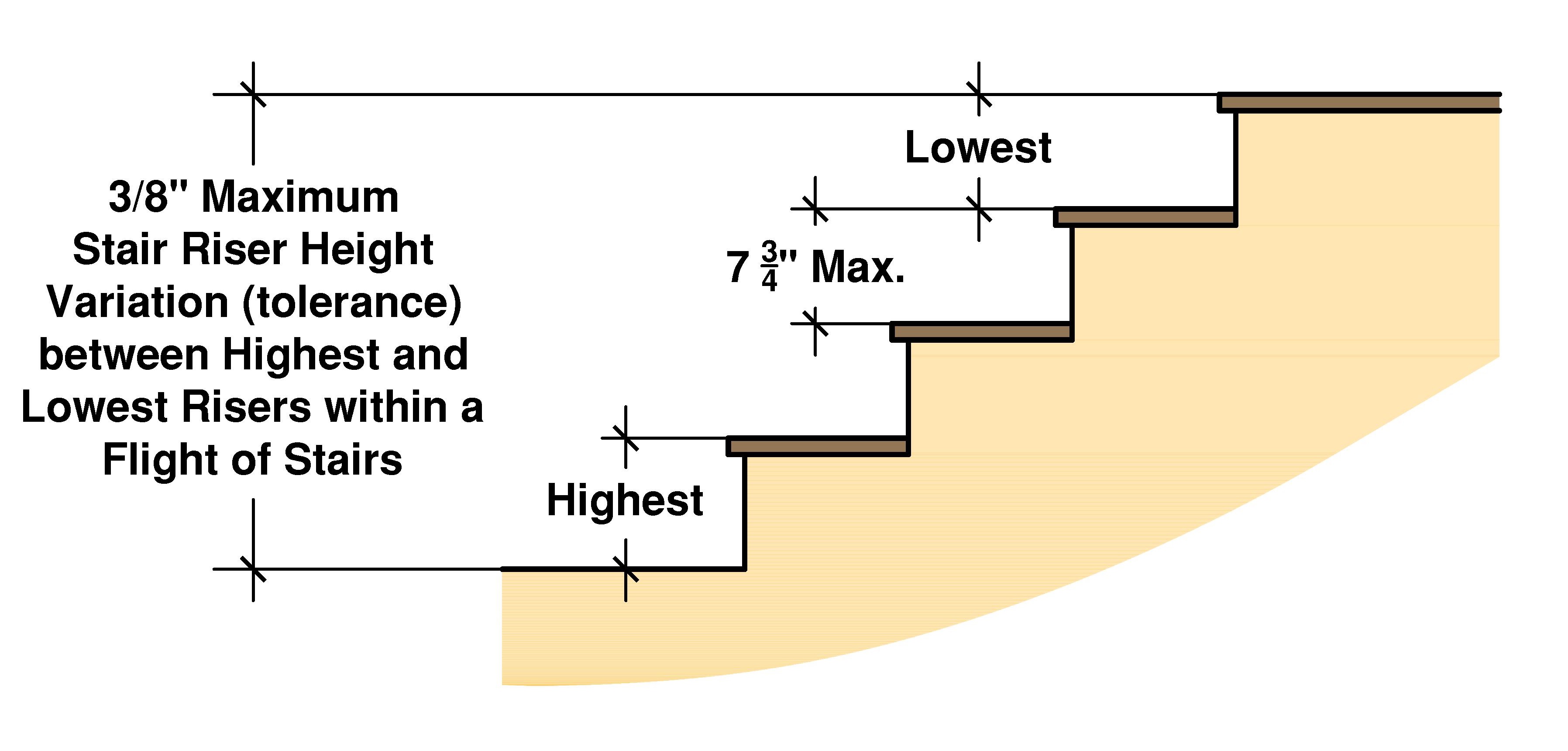
Stair Tread Depth
As for stair treads, Section R311.7.5.2 of the code specifies that the depth must not be less than 10 inches however this will require nosing projections. To avoid having to install nosing the code requires the depth of the tread to be no less than 11 inches.
Nosing that is beveled must not exceed ½ inch or the radius of curvature not more than 9/16 inch. The projection of nosing shall not be more than 1 ¼ inches and no less than ¾ inch. Again the tolerance of treads or nosing must be no more than ⅜ inch. The nosing requirements are found in Section R311.7.5.3 of the code.
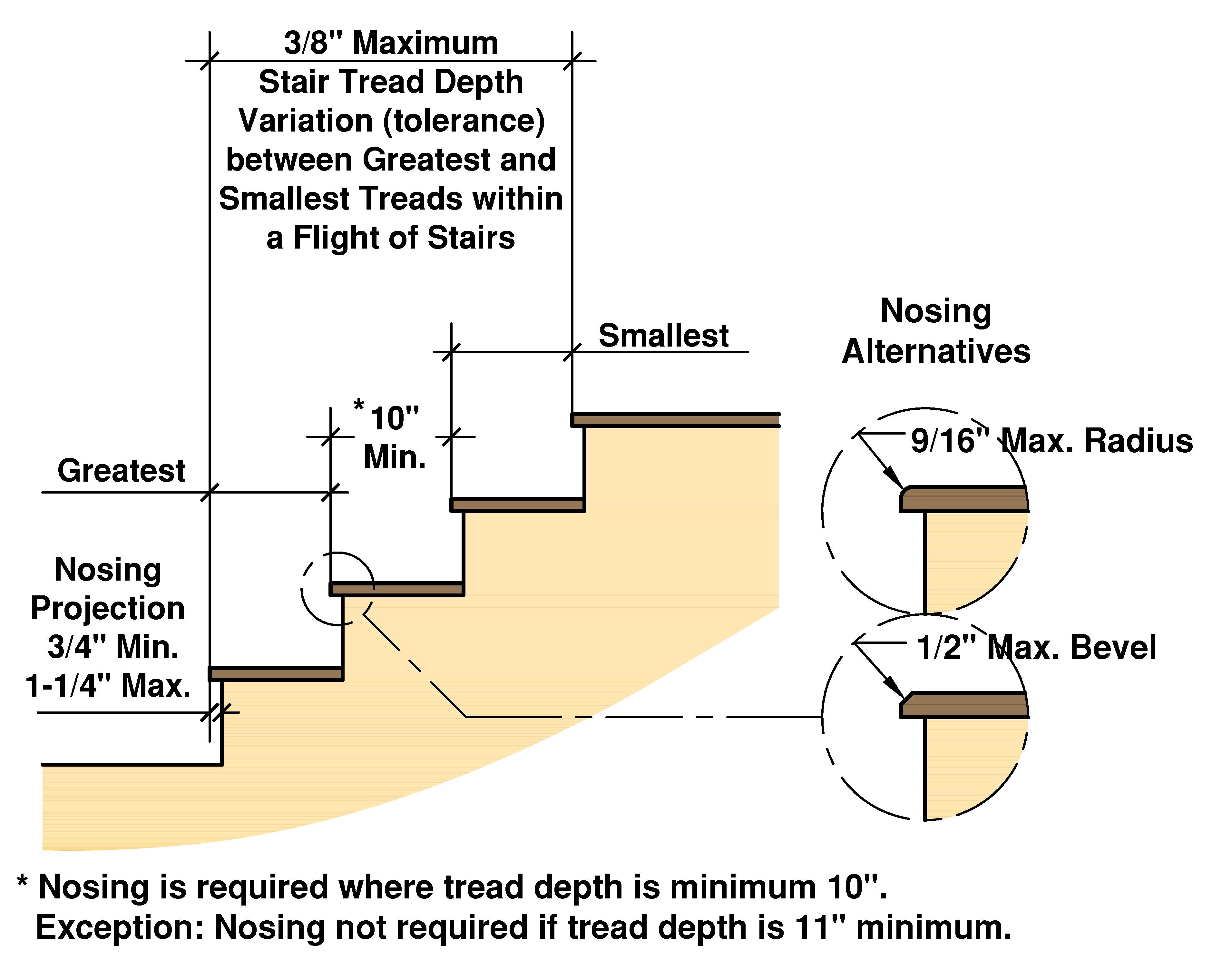
It is important to note that the code establishes the minimum and maximum requirements to ensure a level of safety is provided. If the risers are too tall or the treads are too deep, they can be a potential tripping hazard.
For a general rule of thumb, when it comes to residential stairs, the design industry will utilize the 7-11 rule which means 11 inch treads with 7 inch risers. This is typically a standard design for stairs.
However the code understands every scenario is different which is why it provides limitations. So if you are within those limitations, the design of your staircase will come down to what works best for the user given your space limitations.
Fun Tip: For Winder Tread dimensions, be sure to check out this post: Winder Stair Requirements | Explained!
STAIR HANDRAILS
As for handrails, there are several safety factors to go over such as knowing when they are required, height placement, and the clearance from a wall. All of which is found in Section R311.7.8 of the code.
When are Stair Handrails Required?
Each flight of stairs having four or more risers must be provided with handrails on not less than one side per Section R311.7.8.
Handrail Grip Size
When it comes to handrails the code is very specific on this. It should provide proper graspability which the code recognizes a Type I and Type II handrail to have.
Type I handrails layout the parameters for handrails having a perimeter dimension not greater than 6 ¼ inches while Type II handrails address handrail perimeters greater than 6 ¼ inches.
Here’s a visual of what these handrails look like.
Circular Handrail Type I
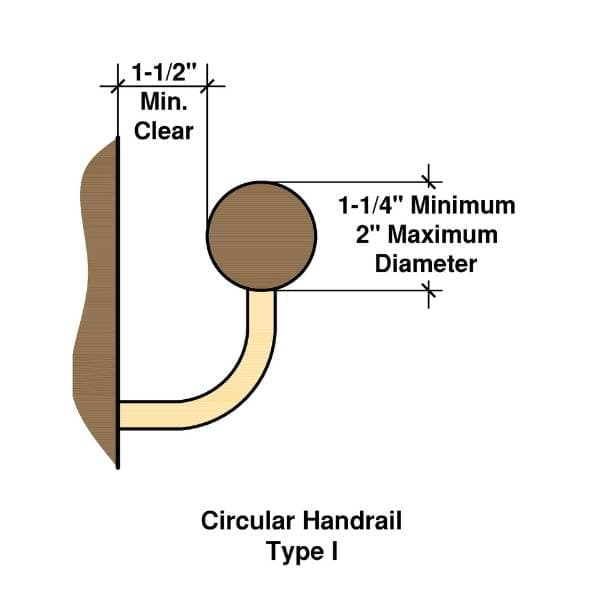
Non-Circular Handrail Type I
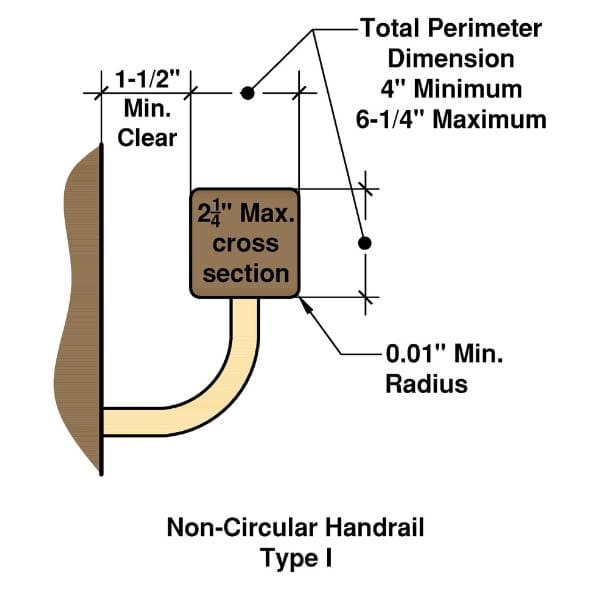
Recessed Handrail Type II
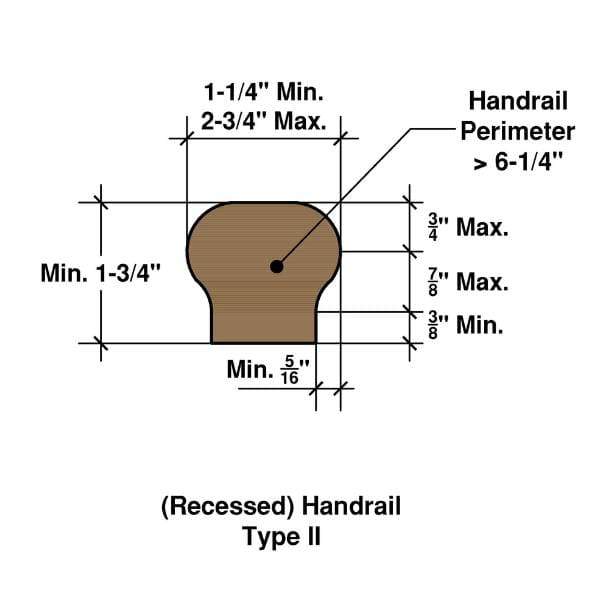
The handrail graspability requirements are noted in Section R311.7.8.5.
Stair Handrail Height and Clearance
As for the stair railing height they can be placed within 34 to 38 inches and shall be provided on at least one side of a flight of stairs having four for more risers.
If they are placed up against a wall they should have a clearance from the wall not less than 1-½ inches.
They must be continuous for the full length of the flight of stairs and shall begin at a point directly above the bottom riser to a point directly above the top riser.
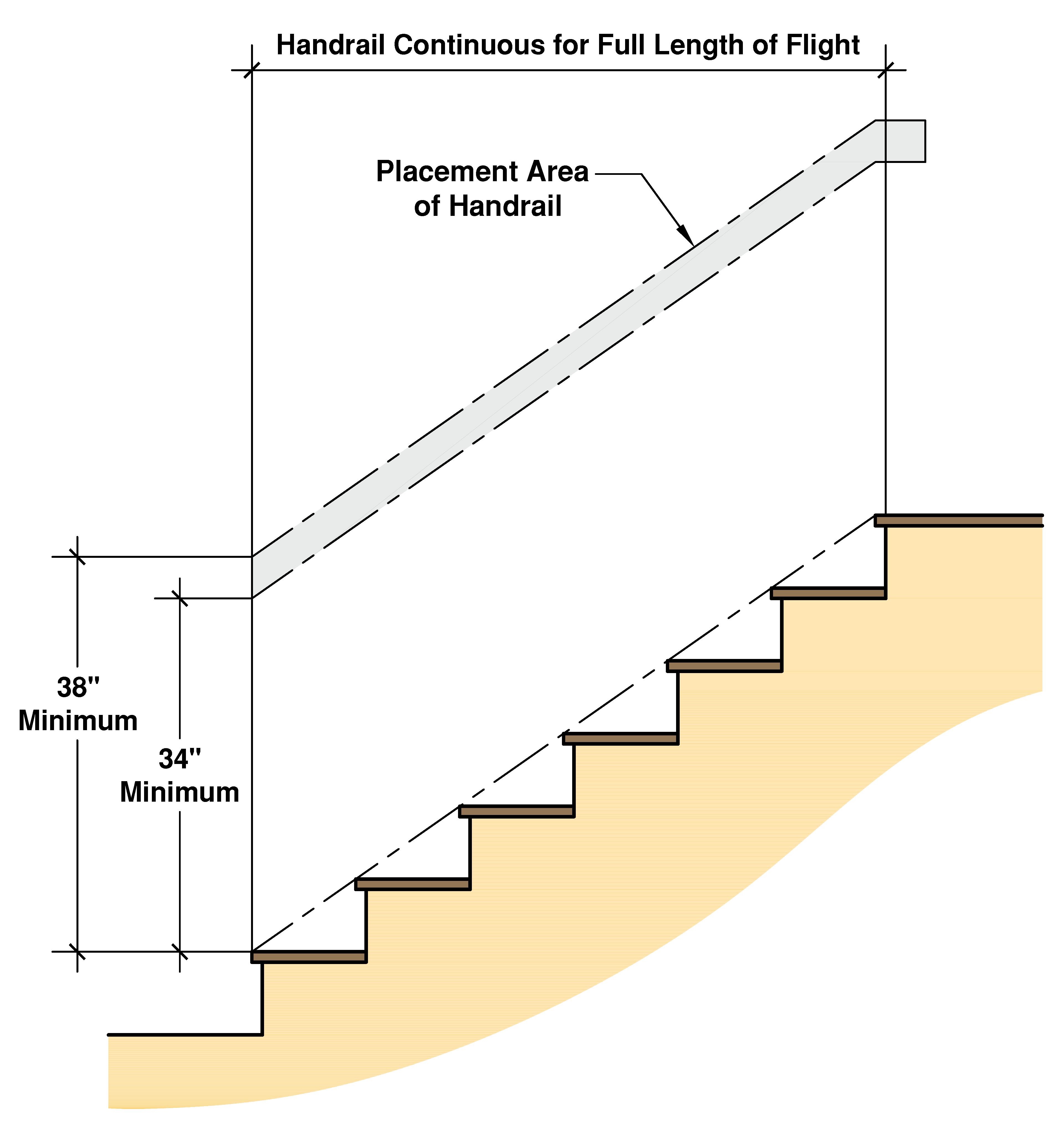
The handrail height requirements are noted in Section R311.7.8.1 and the handrail clearance requirements are noted in Section R311.7.8.3.
EXCEPTIONS TO THE RULE
It is important to understand that these code requirements are established for residential stairways, however are there any scenarios where these code requirements do not apply?
If we go back to Section R311.7, where all this began, we will find 3 exceptions that the code provides.
- Stairways not within or severing a building, porch or deck.
- Stairways leading to nonhabitable attics.
- Stairways leading to crawl spaces.
If your stairway falls within these 3 scenarios, the code requirements of Section R311.7 are exempt.
STAIR GUARDRAIL REQUIREMENTS
Many people commonly confuse a handrail from a guardrail and vice versa.
Although they share some similarities, they both serve a different purpose. We just took the time to go through the residential code requirements for residential staircases per Section R311.7, however guardrail requirements are found in Section R312.1 where the code outlines the requirements for fall protection.
To learn about the code requirements for Residential Guardrails and what purpose they serve, be sure to check out this POST.
Summary of Code Requirements for Residential Stairs
So this basically sums up the basic code requirements for residential stairs and their dimensions. Therefore let us recap on the residential stair code requirements:
- Minimum 36 inch clear width for stairway.
- Maximum 4-1/2 inch handrail projection into stairway width, on either side.
- Minimum 6′-8″ headroom height clearance for stairway.
- Maximum 12′-7″ vertical height (rise) for a flight of stairs.
- Maximum 7-3/4 inch stair riser height.
- Minimum 10 inch stair tread depth with nosing or Minimum 11 inches with no nosing.
- Handrail graspability to be either Type I or II with a Minimum 1-1/2 inch clearance from a wall.
- Stair Handrail height to be placed a Minimum 34 inches to 38 inches.
For more information, see Section R311.7 of the 2021 International Residential Code for a more in-depth look at stair requirements.
.
Related Articles to Read:
- Is My Spiral Staircase Code Compliant?
- Are Ship Ladders Code Compliant?
- Are Alternating Tread Devices Code Compliant?
About the Author

Building Code Trainer
AuthorThis site is run and maintained by a Certified Building Official, Plans Examiner, and Inspector. With a Bachelors of Science Degree in Construction Engineering along with holding multiple ICC certifications, the Author of this site has over 15 years of experience within the construction industry.
Want to become a Residential Building Inspector?
Test your knowledge with 2 full practice exams based on the B1 Residential Building Inspector Exam.

$34.99
Includes 2 Practice Exams,
60 Questions Each
This practice exam is designed for those who are looking to take the 2021 or 2018 B1 Residential Building Inspector Certification Exam administered through the International Code Council (ICC).
These practice exams are intended to help you prepare for the actual exam by helping you navigate through the code book to familiarize yourself with the specific code sections. They will test your knowledge on the exam content areas covered to improve your chances of passing the certification exam. This is a great way to prepare yourself for the actual exam administered by ICC.
